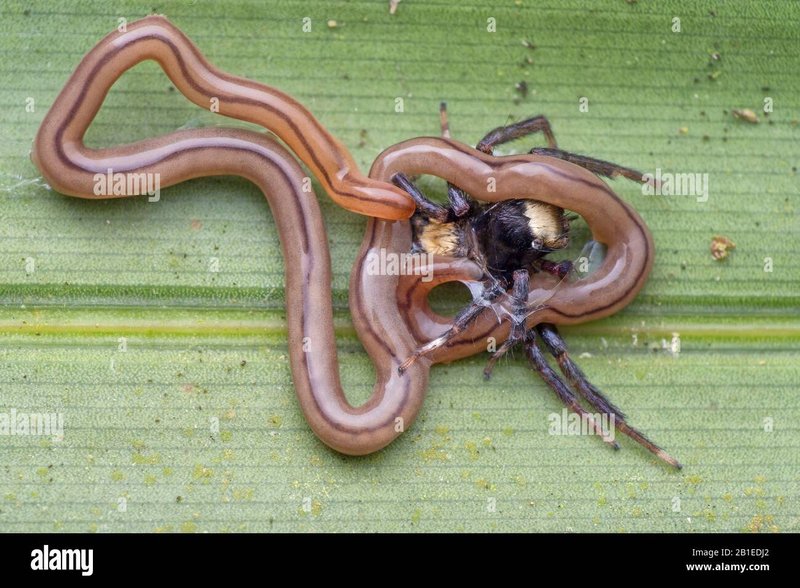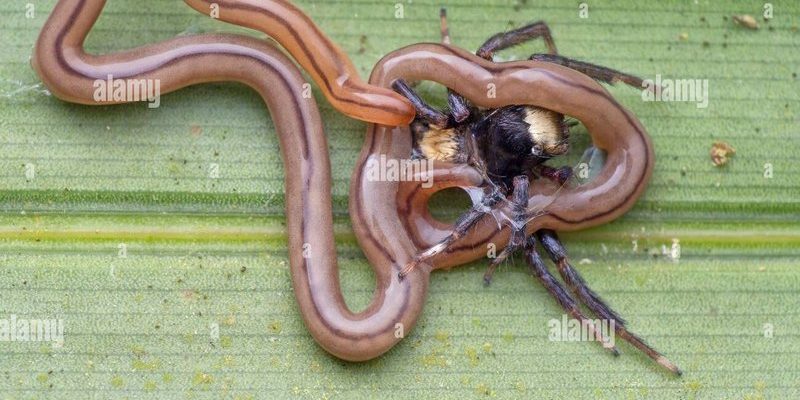
Ribbon worms, or *Nemertea*, are long, slender invertebrates that can measure from just a few centimeters to several meters in length. They might not be as cuddly as a puppy or as majestic as a dolphin, but they play an important role in their ecosystems. Understanding their diets helps us appreciate their part in the food web. So, let’s dive into the world of ribbon worm diets and figure out what these squiggly creatures munch on.
How Ribbon Worms Catch Their Food
Honestly, the way ribbon worms eat is quite fascinating. They have a unique feeding mechanism that sets them apart from many other marine animals. Instead of just gobbling up food like some fish do, ribbon worms use a specialized structure called a *proboscis*. This long, tubular appendage can extend out of their body and capture prey.
Imagine using a long, sticky hand to grab your next snack! The proboscis can be covered in glue-like substances that help the worm snatch up its prey. Once it has its meal secured, the worm quickly retracts the proboscis, drawing the food back into its mouth. It’s a nifty little system that showcases how these invertebrates have adapted to survive in their environments.
What Do Ribbon Worms Eat?
Now that we know how ribbon worms catch their meals, you might be wondering what exactly they eat. Ribbon worms are generally carnivorous, which means they primarily feed on other animals. Their menu often includes:
- Small fish
- Mollusks
- Polychaete worms
- Crustaceans
Let’s break this down a bit. Small fish and crustaceans, like shrimp and crabs, are common targets. You could think of these worms as ocean predators, sneaking up on their favorite snacks. They also eat other worms, especially polychaetes, which are another type of marine invertebrate. So, in a way, little ribbon worms can be considered the “hunter” in their watery habitats.
Habitat Influence on Diet
A ribbon worm’s diet can vary depending on its habitat. For instance, those found in shallow coastal waters may have access to different prey compared to those living in deeper ocean environments. This variation means some ribbon worms might have a more diverse diet while others stick to certain types of prey.
In muddy or sandy environments, ribbon worms can often find plenty of small animals to feast on. Imagine a buffet where they can choose from all sorts of delectable options! On the other hand, ribbon worms in rocky crevices might focus primarily on mollusks and other hard-shelled creatures, which are abundant in those areas.
The Role of Ribbon Worms in the Ecosystem
You might not think about it, but ribbon worms play a crucial role in the marine ecosystem. By feeding on small fish and other invertebrates, they help control the populations of these species, which can prevent overpopulation and maintain balance within their environment. This balance is essential for the overall health of the ocean.
Moreover, ribbon worms themselves serve as prey for larger animals, like fish and seabirds. So, they’re an important part of the food chain. By understanding what ribbon worms feed on, we can appreciate how these creatures contribute to the marine ecosystem and the larger circle of life in the ocean.
Feeding Behavior Variations Among Species
Not all ribbon worms have the same feeding habits. Different species have developed unique adaptations or strategies to catch their food. For example, some have specialized feeding mechanisms that allow them to hunt more efficiently, while others may rely more on ambush tactics to surprise their prey.
Let’s paint a picture: imagine a ribbon worm lying still, camouflaged against the ocean floor. It waits patiently, ready to strike when an unsuspecting crab wanders too close. Meanwhile, another species might be actively hunting, using its proboscis to reach out and grab lunch in a flash. These variations show us how ribbon worms have evolved over time to fill different niches in their environments.
In a world filled with captivating creatures, ribbon worms are truly unique. Their diets reveal a lot about their role in the marine ecosystem, showcasing how they’ve adapted to survive and thrive in various habitats. From their fascinating hunting methods to the diversity of food they consume, these long, squiggly worms play a vital part in keeping ocean life balanced.
So, the next time you think about what’s happening beneath the waves, remember the ribbon worm. They may not be the most glamorous of ocean dwellers, but they’re definitely a key player in the underwater world. Understanding what ribbon worms feed on gives us a deeper appreciation for the intricate web of life that exists beneath the surface.

